What Are Backlinks And Why Do Local Businesses Need Them?
Published:
Backlinks are a hot topic in SEO, but they can be difficult to understand, even for experts! While generating incoming links is one of the most critical factors in helping your website rank higher, poor quality external links from link farms or PBNs (Private Blog Networks) can cause issues.
Many business leaders have questions about backlinks. What are backlinks? Do you actively need to generate backlinks? How many backlinks should you get? And just how do you find the right links for your site?
Thankfully, we’ve got the answers to all these questions and more. As leading providers of digital marketing services, including link building, for businesses across a range of industries, including home services, healthcare and more, Right Hook understands how important building backlinks is for your online presence. Keep reading to learn more about backlinks and how to integrate link building into your SEO strategy.
What Are Backlinks?
Simply, backlinks are where a website links to yours, creating an inbound link that tells search engines that your content is considered valuable enough to be linked on an external site. This link can be in text, a button, or even attached to an image.
When it comes to your SEO strategy, you’ll be looking to build relevant backlinks contextually, meaning they will probably be inserted into content.
This might include reviews with links to your product page, links included in guest blog post biographies, links in social media posts, and more.
There are several types of backlinks, including:
- Dofollow Backlinks: These links are the default type, and show that the link comes from the page to your site. As long as it’s not from a low quality site, a dofollow link will likely be noticed and added to your list of referring domains, improving your domain authority and other third-party metrics.
- Nofollow Backlinks: Nofollow links use the rel=”nofollow” HTML tag. Although people think they are useless, Google uses this tag as a suggestion, not a directive, and will take these links into consideration when reviewing your backlink portfolio. As such, nofollow links can be a useful addition to a varied backlink portfolio.
- Social Media Links: Links on social media platforms, such as Facebook, Instagram or LinkedIn, are usually nofollow, but they can drive referral traffic to improve your clicks and lead generation.
- User-Generated Content: Similar to social media links, links in content generated by users, such as on forums or in blog comments, can be useful depending on the content quality and site relevance, but will provide limited link equity.
- Citations: Citations are mentions of the business’s name, phone number and address on sites such as directories or mapping services. They are a key part of local SEO and can be valuable for highlighting the legitimacy of your local business.
- Guest Posts: Building backlinks by guest posting typically involves creating content on other sites under your name, and then including a backlink in the biography. This method can be a valuable part of your content marketing strategy, but only if you create relevant content on authoritative websites in your niche.
- Editorial Links: Natural links included inside articles on resource pages can show that your site is worth linking to and that you offer a resource that other websites find valuable.
When talking about backlinks in this context, we’re referring to external links to other website. You can also build internal links, which you can learn more about in our guide to Internal Links For SEO.
Why Are Backlinks Important?
Backlinks send a signal to search engines that your website is trustworthy. They also help search engines to see what keywords your site should be associated with.
Having a diverse backlink portfolio is crucial for SEO success and helping to improve your Google rankings, as it shows that your website is trustworthy and an authority on your subject.
Not only are backlinks a crucial ranking factor, they are useful for gaining increased referral traffic, and sending a signal to search engines that your website is an important source.
Backlinks also help improve your ratings on third-party tools and metrics, such as Page Authority and Domain Authority from Moz. While these metrics aren’t a ranking factor incorporated by search engines, they can be used by other website owners to assess your site and determine how trustworthy it is.
Unlike on-page some other SEO strategies, backlinks often don’t generate fast, clearly visible results. However, if you look at an overview of the top ranking web pages on any high search volume SERP, you’ll see that most of the websites have extensive backlink portfolios.
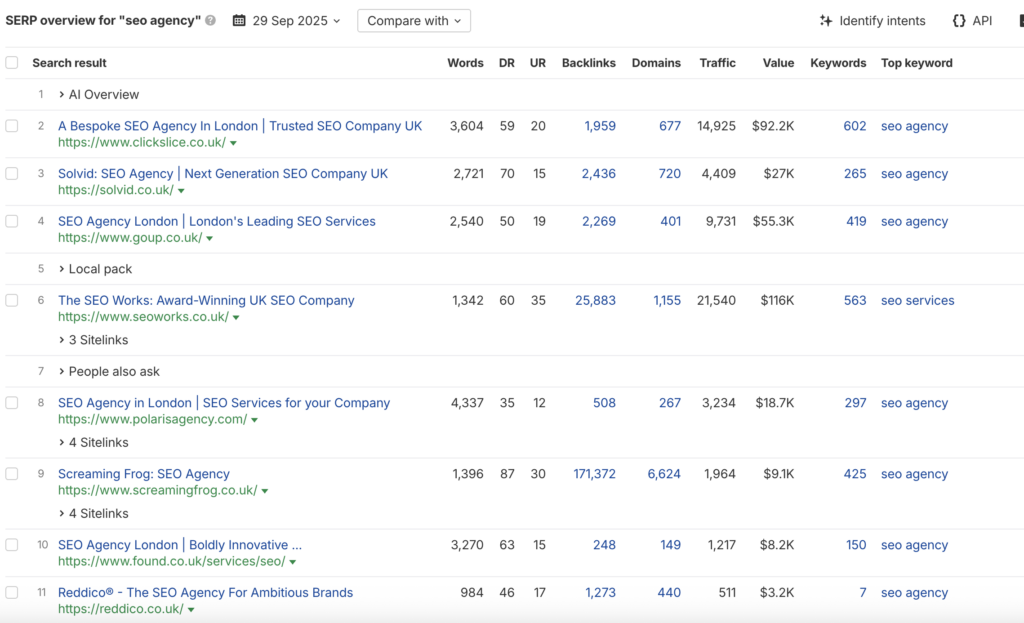
These backlinks, when taken together with the content on the page, the site’s technical performance and other mentions across the internet, can help search engines like Google and others to make informed decisions about what ranks highest for specific keywords.
Is Generating Lots Of Backlinks A Good Idea?
While backlinks remain an integral part of SEO, you need to understand that not all backlinks are created equal. Backlinks from spammy sites, or links in irrelevant content, can do more harm than good.
Generally, Google will simply ignore poor quality backlinks pointing to your site. However, if you generate a lot of spammy backlinks quickly, Google may overlook your site, meaning you could drop in search rankings or drop out altogether. Also, you’re unlikely to generate much organic traffic from irrelevant backlinks on a spammy linking site.
High quality backlinks tend to take time to generate, so a large volume appearing at once will look suspicious to search engines and may cause them to penalise your site with a manual action.
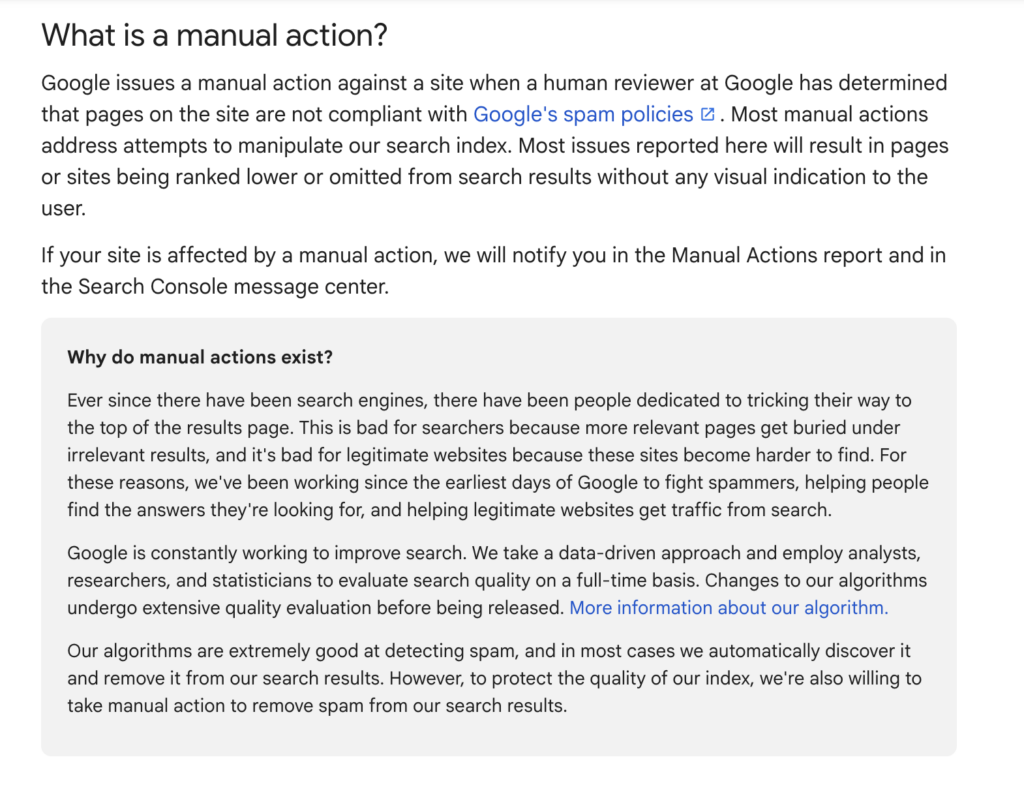
How Can You Build High-Quality Backlinks?
When it comes to backlinks, quality beats quantity. What that means is that it’s not about the number of backlinks your site has, but that they are quality backlinks to relevant sites. Here are some basic tips on how to build relevant backlinks to your website.
Check Your Backlink Profile
It’s important that you check your existing backlinks before you start generating new links, so that you don’t contact sites you already have links on.
Building backlinks consistently to one website won’t give you a varied portfolio, and isn’t worth your time.
Also, knowing what backlinks you have currently and where your link appears on the site can help you to monitor them, check for broken backlinks and connect with the site owner to make updates if required.
While there are many free SEO tools, one of the best ones for both finding existing backlinks and identifying good link building prospects is Ahrefs.
The free backlink checker tool allows you to find your backlinks and review them, so you can work to build a varied, relevant backlink portfolio.
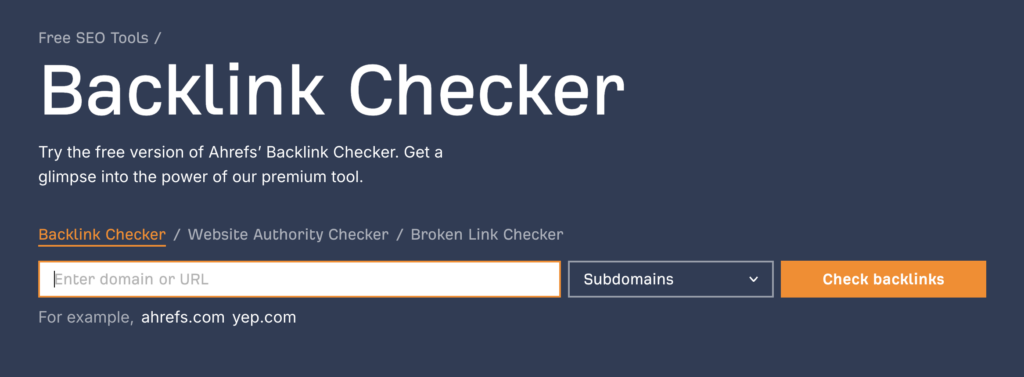
Find Relevant Sites
There are several methods you can try to identify link building opportunities, including:
- Broken Link Building: Broken link building involves looking for existing backlinks to your site that have been removed or broken, and them contacting the site owner to ask if they can be replaced.
- Unlinked Mentions: Another strategy you could try involves finding unlinked mentions to your brand on other websites and reaching out to ask if they could include a link. You can set up Google Alerts to get notified every time your brand is mentioned and appears in Google News resources, so you can then immediately check for a backlink.
- Reviewing Competitors’ Backlinks: Backlink checker tools allow you to review the link portfolios of other websites, so you can see who is linking to their site and contact them to offer informative content.
- Guest Blogging Outreach: By searching for sites about relevant topics that offer guest posting opportunities, you can build high authority site links where you have control over the content and anchor text.
- Link Insertion: If a site already has relevant content, then adding your backlink could provide valuable link equity. You can reach out to the site owner and tell them to target page you want to add your link to and suggest a quote or comment that would make the content more insightful and include a backlink to your site.
When checking websites for potential collaborations, make sure you read the content and look at who else is contributing to the site. Skilled, qualified authors make content valuable to readers and search engines alike, so look out for experts in their fields contributing to the website.
Once you have a list of potential sites, you need to ensure that they are authoritative sites that will benefit your website and be seen as valuable sources by search engines like Google and others.
Using the Ahrefs Site Explorer, you can view the site’s traffic, and look for consistencies. Significant drops can be an issue, so be wary of these.
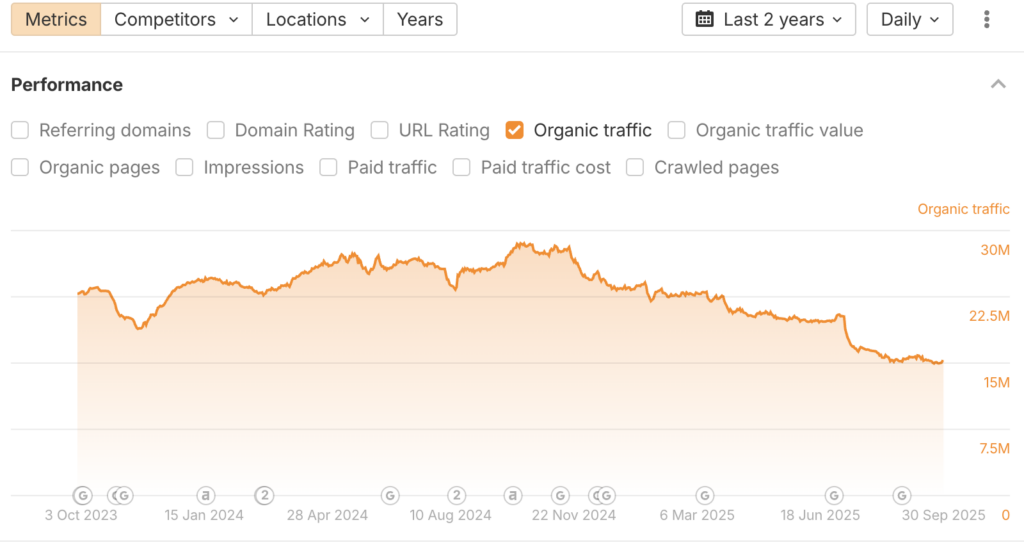
You can also look at the organic keywords that the site ranks for. PBNs and link farms often rank for random terms, such as strings of numbers, or irrelevant terms, while authoritative sites will rank for topics in your niche.
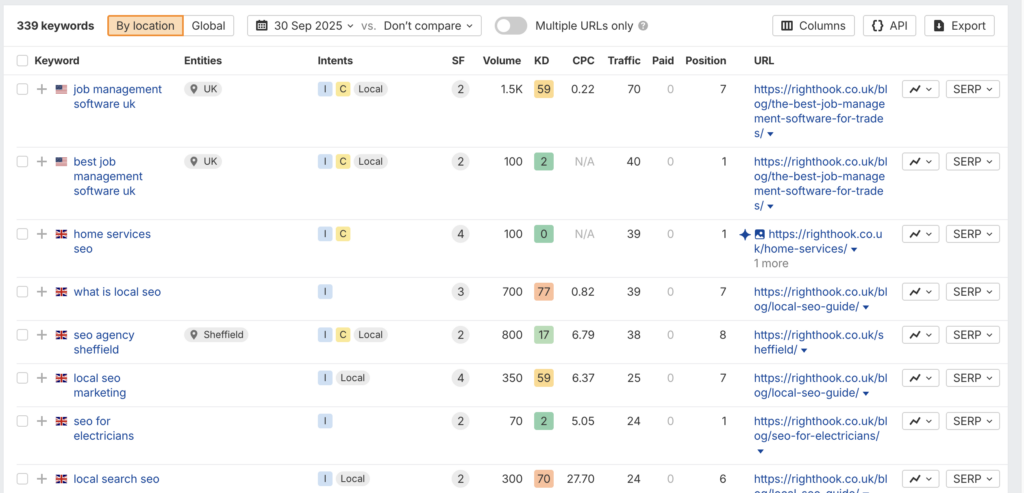
Communicate With The Site Owner
When you’ve identified relevant sites that you want to build links on, you need to contact them to form a partnership.
First, start by working out what kind of link you want to build. If you want a link insertion into existing content, make sure you explain why your information could enhance the piece further.
If you’re looking to create a guest post, share links to previous guest articles you’ve authored, if you have them, and explain why your content could be beneficial to their site.
You may want to consider offering a reciprocal backlink to your own website to sweeten the deal.
For websites that don’t have contact forms, or if you’re struggling to get a response, consider using Hunter.io to find contact details and quickly get your email read by the right person.
Create The Right Content
It’s not just the website that links to your site that affects your SEO success, but also the quality of the content it’s in.
If you’re writing that content yourself, you need to make sure you create an insightful, interesting piece that says something unique.
Generic content won’t be useful for the linking website or your site, and the target site might reject the piece.
As such, you need to make sure you draw on personal experiences or provide unique data to make the piece as unique and enticing as possible for readers.
In the age of AI-generated guff, it’s human-led pieces that stand out. Whether that’s content like this, that draws on tried-and-tested techniques, or an opinion piece backed by data, it’s important that you write something that is unique and gives value to the reader.
When you can achieve that, you’ve basically optimised the content for search engines. While some tactics, such as adding extra keywords, can be valuable, most search engines determine content quality by considering factors that make text unique and informative to humans.
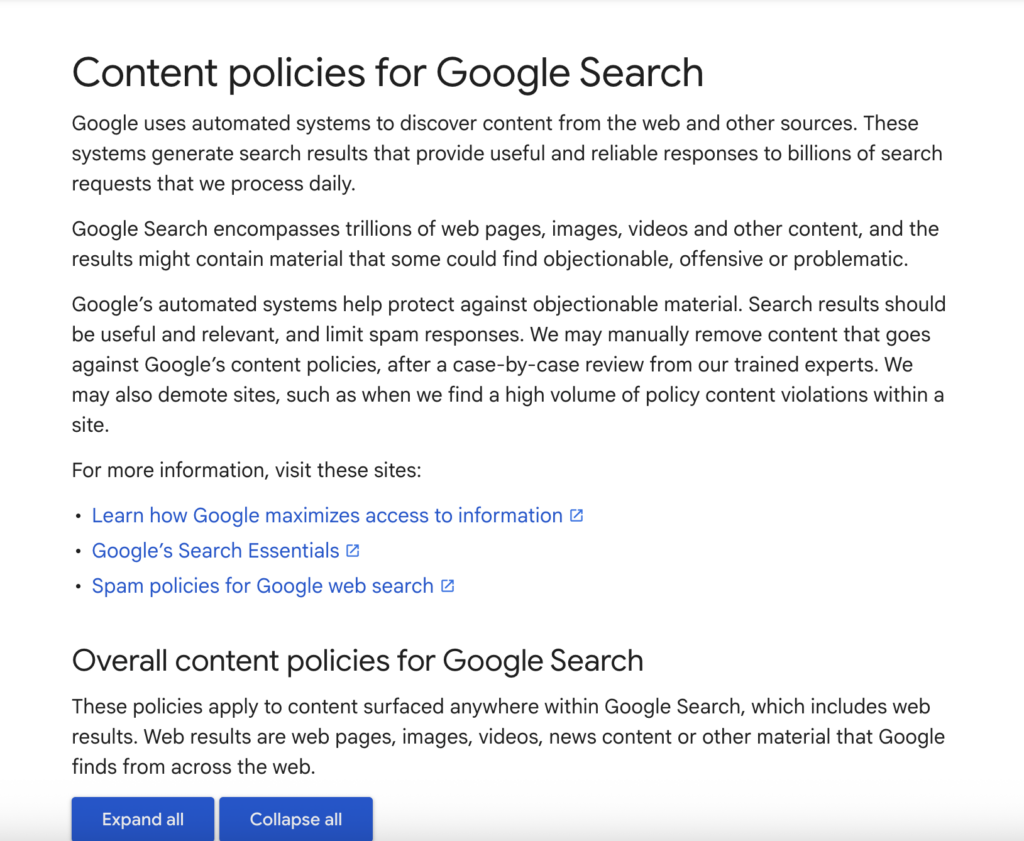
Understand Anchor Texts
When it comes to link building, the words on which your link is placed, known as the anchor text, are vital. There are many types of anchor texts, including:
- Exact Match: An exact match anchor text is where you use the keywords you want to target as the anchor text. A keyword rich anchor text can show the terms that you want the linked page needs to rank for, but it’s important that you vary your anchor texts and only use exact match when it is grammatically correct.
- Partial Match: Partial match anchor texts include your target keywords, but also other terms. These often become long-tail keywords, and might be several words long. Using partial match anchors allows you to vary your anchor texts and ensure they fit naturally into your content.
- Branded: Branded anchor texts use the company name or product to link one website to another. Branded anchor texts can be useful, especially when used next to target keywords.
- Naked URL: Just using the URL of the website as the anchor is a common practice in user-generated content links, but it can also be used in guest posting if you want to persuade readers to go to a specific web page. For example, you might say: ‘If you’re looking for a guide to brochure websites, you might want to explore options like https://righthook.co.uk/blog/what-is-a-brochure-website/‘.
- Generic: Linking to generic terms, such as ‘click here’, or just ‘here’, is a good way to vary your anchor texts, but isn’t as effective as other techniques listed here when it comes to link building.
When building a varied backlink portfolio, you need to ensure you don’t use the same type of anchor text over and over again.
While exact match anchor texts might seem like the most useful for your SEO strategy, you want to make sure that the anchor text sites naturally in the content.
That might mean using different anchor text the content you create, depending on how it is worded and what looks the most natural.
Review Your Backlinks
Once you’ve built your backlinks, you need to make sure you check that they are definitely visible to search engines.
To do this, right click on the web page with your link on it, and click on ‘View Page Source’. This will show you the code for the page.
Click ‘control + F’ to launch the search bar, and then look for your domain name. Check the code, and look for the words: ‘noindex’. If this term appears in the HTML code, then the link, and the entire page itself, is not indexable, and can’t be seen by search engines.
If you see this tag, you can communicate with the site owner to ask them to remove it, since the link won’t be useful for your link building campaign and won’t improve your site’s search engine rankings.
If you check the code around your backlink specifically, you’ll be able to see if this is dofollow or nofollow, and can make a note of this when searching for other backlink opportunities so you can ensure you build a varied portfolio.
Other Ways To Build Backlinks
While guest posting and building editorial links is often the best way to generate backlinks naturally over time, there are other techniques you can use to build backlinks. Many of these strategies give you less control over where the link is placed, but can be a valuable addition to a varied backlink portfolio.
Some alternative tactics for building backlinks include:
- Digital PR: Digital PR is a technique similar to guest blogging, but instead of websites, digital PR experts reach out to journalists with potential stories for them. If the stories are picked up, they ask for a link to the business to be included in the piece, which can help businesses to generate links on high traffic, authoritative websites quickly.
- Regular Content Creation: A less targeted approach is to regularly write high-quality content for your website and share it on social media. Content creators, bloggers and journalists will notice your resource, particularly if it ranks high on search engines already or contains original insight, and may add this as a reference in their work.
- Responding To Forum Questions: Forums such as Reddit and Quora allow users to share relevant links to respond to queries or questions. Doing this shows your brand’s commitment to helping others, as well as raising your brand recognition and improving your chances of generating more organic website traffic.
Some of these link building techniques give your business less control over where the incoming links are placed in the text, or the content in which they are included. However, these are natural backlinks that can be good for both search engine optimisation and generating organic traffic to your site, so they are worth considering.
Get Right Hook In Your Corner
If you want to create a link building strategy that will work, you need to make sure you’re getting high authority backlinks that will give your website more weight for relevant search terms.
Poor quality links can damage your site’s credibility and do more harm than good, so it’s crucial that you work with an experienced team who can help you create a link building strategy that works.
Right Hook can do everything for you, from identifying your competitors’ backlinks to finding broken backlinks and creating content for you. We also offer digital PR services to help you build a varied backlink portfolio on high authority websites.
Link building is just one part of your SEO strategy, and to rank higher on relevant search results pages, you also need website development and branding support. After all, it’s no use building high authority site links if the website you point them at doesn’t work, looks cheap and isn’t SEO optimised.
So, you need to make sure you get every aspect of online marketing right if you want to grow your reach. If you’re ready to see how your business could benefit from link building, book a call with Right Hook today.
Article by:
Hannah Stevenson
I’m a passionate SEO and content creator who loves working with local businesses! It’s so satisfying to be able to help companies to reach their target audience in their area for high volume search terms. As well as writing content, I also spend a lot of my time optimising Google Business Profiles and carrying out off-page SEO for my clients.
